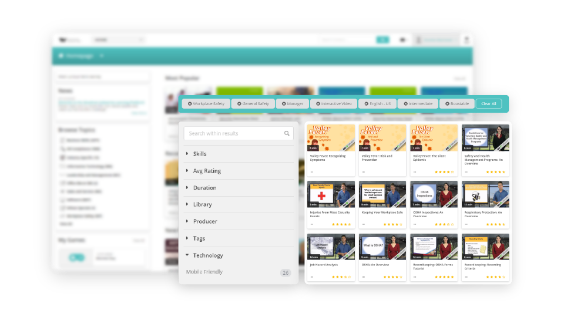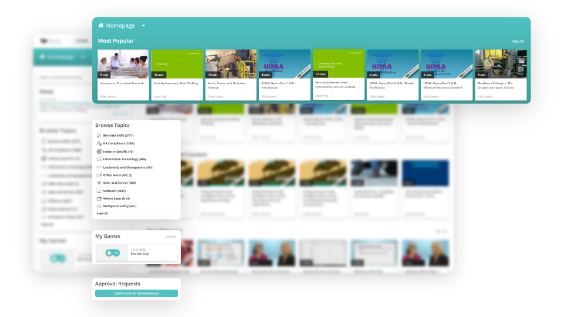COACHING AND FEEDBACK SKILLS TRAINING
FOR YOUR ORGANIZATION
FOR YOUR ORGANIZATION
Coaching Versus Feedback
Many managers when working with employees to help solve problems often mix up coaching and feedback techniques. They coach when they should have given feedback (seeing a problem with software and not giving direct feedback) or give feedback when they should have coached (telling an employee exactly what to do when having trouble with another team). This can leave both parties feeling frustrated and leaves problems unresolved.Feedback occurs as the result of an action. It can be positive or more critical and occurs because of something someone does or says. It’s essentially how we learn from our experiences and interactions. It’s always based on past actions, which is perhaps the biggest distinction from coaching.
Coaching, however, is focused on the future. It happens within a defined relationship where one person has more expertise and is centered on helping learners improve. Coaching conversations often consist of questions to prompt the employee to think through situations. Great coaches don’t explicitly tell employees what to do but instead ask open-ended questions.
When to Use Coaching and Feedback
Feedback should be given often and shares as soon as possible after an event or action has occurred. Positive feedback can be given in front of others if it feels appropriate, while critical feedback should always be delivered privately.Coaching on the other hand isn’t necessarily time sensitive. It can take time to develop a relationship, first. But the one-on-one meetings will usually involve an in-depth conversation, so provide employees with that knowledge beforehand. Coaching also works best when the employee has experience with the skills they’re being coached on. If a job is completely new to someone, that person needs feedback, as well as specific direction and instruction in how to do the task.
These two separate entities can be used together, however. Feedback can be used during coaching, and coaching can be given after feedback. Open-ended questions are a great tool to use after giving feedback to the employee to help brainstorm ways to approach a task next time.
What Effective Feedback and Coaching Look Like
Delivering Effective FeedbackEmployees want to know how they’re doing. Not providing feedback leaves them in the dark on what they do well and what can be approved upon. Then, if feedback is given, there are many reasons why a feedback session can go wrong - strong emotions, focusing on character rather than behavior, no clarity about changes needed, etc. However, one main reason feedback goes wrong is our protective nature of ourselves. We want to feel safe and included and often see feedback as something that lowers self-esteem.
When delivering feedback, make sure managers understand how the receiver feels and that they have a clear purpose set in place.
What Effective Feedback Should Be
- Feedback needs to be specific, timely, meaningful, and honest.
- Specific – Feedback should be clear and have a tie into overall business goals.
- Timely – Deliver feedback as closely to the action occurrence as possible.
- Meaningful – Provide actionable suggestions of how to adjust or change behavior and add in additional context if needed.
- Honest – Be candid with employees when delivering feedback or risk losing trust with teams.
The role of coach should no longer just be for athletes. Providing coaching in the workplace can help employees perform to the best of their abilities. Great managers develop an open and honest environment with employees that help everyone stay motivated and engaged.
They encourage employees to learn from one another as no two employees are alike. They have different skills and backgrounds, so just connecting with them can open doors that employees may have previously thought were closed.
Effective coaches listen to employee ideas and ask for their opinions. This helps employees feel heard, respected, and valued. When that’s the case, they’re far more likely to be engaged as well.
Managers need to be aware of what employees need to do their jobs, so train them to ask how to help. Urge managers to collaborate with their teams to search for solutions together and that questions are not only allowed, but encouraged.
Preview Videos from The BizLibrary Collection
Coaching Crash Course: Coaching Basics

Coaching Overview

Leading Teams Crash Course: Coaching and Feedback

Coaching Process
The coaching process is different for every organization and every employee within that organization. But there is a simple outline that can be followed to get the conversation off on the right foot.
Connecting Regularly
At its core, coaching isn’t different than any other relationship. It needs to be begin in trust and grow through communication. Building this relationship together is important, and it can take time for employees to open up or to see results but keep meeting with employees on a regular basis to give feedback.
Track Employee Progress
Make sure that when managers meet with workers that they are revisiting previous discussions to monitor progress. Have them consider questions such as:
- How are you feeling since our last meeting?
- Did you complete the previously discussed tasks?
- Did you make any breakthroughs or encounter any problems?
Tracking progress helps determine whether workers are setting realistic goals for themselves and satisfactorily meeting them. Progress tracking is also a way to evaluate the effectiveness of the coaching process.
Work Toward Solutions
Regardless of the scope of an employee’s work, it’s important to empower them to find and implement solutions. Don’t provide them the answers or tell them what to do, but instead encourage your coaches to guide their team members by asking some questions such as:
- What’s stopping you or holding you up?
- In a perfect world, what would be the solution?
- Have you considered and new ways to approach the situation?
- Who could you ask for help?
Getting the employee to analyze the situation helps them learn to think independently and work out the problem on their own.
Why Online Training Works for Learning Coaching and Feedback Skills
Training leaders that know how to deliver feedback is crucial to keeping employees productive and engaged.
BizLibrary curates a large and diverse video training library with numerous courses focused on coaching employees and giving feedback.

Explore more
of our leadership
skills topics.
Online training is quickly becoming the best way to teach employees some of the skills they need to do their jobs. Numerous studies have shown that online training is often more effective, and learners retain more information than with classroom training alone.
Our micro video format breaks content up into smaller, more manageable chunks, making it easier for employees to learn and apply these skills on the job. These online courses can be viewed on an individual basis – where an employee learns by themselves at work or at home – or as part of a group training environment or discussion.
Help your leaders and managers be diligent coaches and deliver feedback well. Talk with an expert to learn how our online learning solutions can transform training in your organization.
